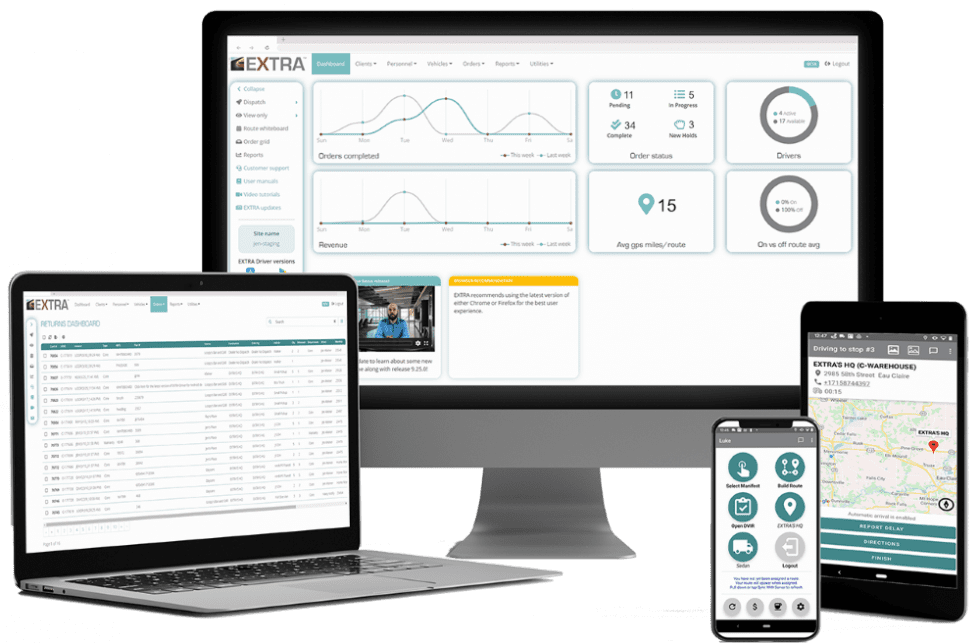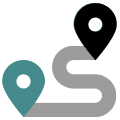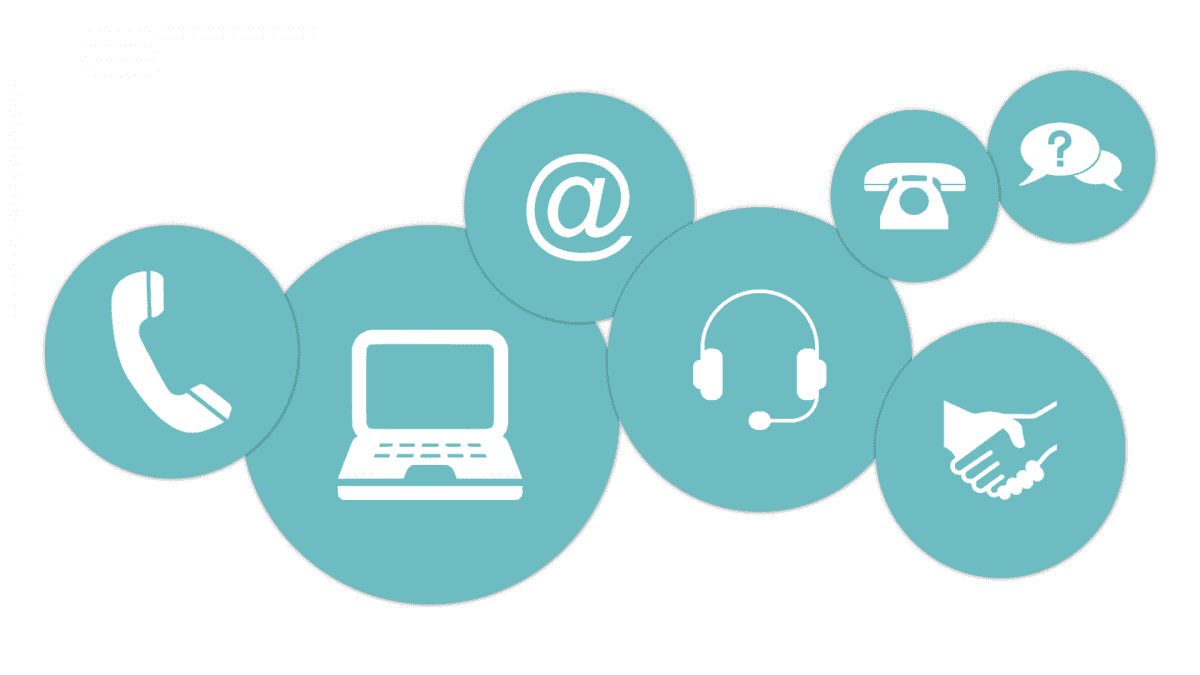
As delivery volumes surge and customer expectations tighten, route optimization software has shifted from a nice-to-have to a competitive necessity. The global route optimization software market is on track to nearly double from $8.02 billion in 2025 to $15.92 billion by 2030, fueled by eCommerce growth, AI-driven dispatching, and sustainability mandates.
U.S. fleets adopting these tools report fuel cost reductions of 10–20%, alongside measurable gains in delivery reliability and driver productivity. Pairing route optimization with idle reduction strategies and telematics-driven sustainability measures can further cut emissions and operating costs. For fleets exploring electrification, the Department of Energy’s case studies show strong ROI across multiple duty cycles.
What Is Route Planning Software?
Route planning software is a business-critical platform that helps organizations design and execute the most efficient travel paths for vehicles, deliveries, and field service teams. By combining advanced algorithms with live traffic, weather, and operational data, it transforms what was once a manual, time-consuming process into a streamlined, measurable system.
Rather than simply mapping point A to point B, the software evaluates dozens of real-world variables—traffic congestion, delivery time windows, vehicle load capacity, driver schedules, and service durations—to produce practical, optimized routes.
Core Capabilities
- Intelligent route sequencing that minimizes mileage and drive time
- Real-time rerouting to avoid accidents, closures, or weather delays
- Automated scheduling aligned with driver shifts, customer needs, and job types
- Performance dashboards to track on-time rates, route efficiency, and driver productivity
Industries Seeing the Biggest Impact
- National and regional delivery networks optimizing last-mile operations
- Field service providers coordinating multi-site jobs daily
- Retail and eCommerce companies managing time-sensitive shipments
- Public sector fleets, from municipal services to school transportation
By calculating efficient paths in seconds, route planning software reduces costs, shortens driver hours, and improves on-time performance—creating scalable, reliable operations.
Selecting Route Planning Software That Fits Your Workflow
Corporate buyers don’t choose route planning platforms on features alone. They weigh them against business goals, operational realities, and growth ambitions.
Key considerations include:
- Advanced Algorithms: Handling multi-stop routes, vehicle constraints, driver shifts, and time windows.
- Real-Time Adjustments: Immediate response to traffic, weather, or last-minute order changes.
- Seamless Integrations: ERP, CRM, telematics, and dispatch system connections for unified workflows.
- Scalability: Cloud-based performance that grows with seasonal spikes or geographic expansion.
- Ease of Use: Intuitive dashboards for dispatchers, mobile tools for drivers, and customer-facing notifications.
- Vendor Partnership: Proven track record, transparent pricing, and measurable ROI.
Ultimately, the right solution doesn’t just optimize routes—it strengthens the entire operation.
The Best Route Planning Software for 2026
Elite EXTRA
Elite EXTRA is a leading U.S. provider of last-mile logistics and route optimization software, trusted by organizations across retail, wholesale, automotive, and field service sectors. With a focus on flexibility, real-time visibility, and customer experience, Elite EXTRA offers one of the most comprehensive solutions on the market.

Feature and Capability Highlights:
- Advanced Dispatching: AI-driven route optimization with real-time re-routing for traffic, weather, and last-minute orders
- Driver Tools: Mobile app with commercial navigation, proof of delivery (signatures/photos), barcode scanning, and driver messaging
- Customer Engagement: Real-time tracking links, text/email notifications, and branded communication portals
- Integration Ecosystem: Robust API and pre-built integrations with ERP, TMS, eCommerce, and telematics platforms
- Analytics & Reporting: Configurable dashboards to monitor delivery times, fuel use, driver productivity, and customer satisfaction
Pricing (2026): Custom-quoted based on fleet size and delivery volume; scalable for SMBs to enterprise operations.
Pros:
- Strong last-mile specialization with proven ROI in delivery networks
- Robust customer engagement and proof-of-delivery tools
- Flexible integrations and configurable workflows
Cons:
- Pricing requires consultation—no off-the-shelf flat tiers
- Best leveraged by fleets with moderate to high routing complexity
Best For: Fleets and businesses needing last-mile optimization, strong customer communication, and enterprise-ready integrations.
Market Position: Recognized as a North American leader in last-mile logistics, with case studies across multiple industries demonstrating measurable fuel savings and on-time performance gains.
Onfleet
Onfleet stands out as a feature-rich, cloud-based route optimization powerhouse, recognized by industry analysts as “best overall route optimization software” for 2025 and likely to maintain that crown in 2026.
Feature and Capability Highlights:
- AI-Powered Dispatch & Routing: Automatic, real-time route generation considering driver skills, traffic, vehicle types, and delivery time windows.
- Driver Mobile App: Turn-by-turn navigation, proof of delivery (signatures/photos), actionable alerts—all synced to dispatcher dashboards.
- Customer Engagement: Branded tracking pages, status-triggered notifications, real-time ETAs, and customer feedback tools.
- Analytics & Export: Unlimited analytics and reporting history at higher tiers, supporting continuous improvement and detailed ROI tracking.
- Integration Flexibility: Zapier, CSV/Excel import, robust RESTful API for direct ERP, TMS, or e-commerce integrations.
- Pricing (2026): Ranges from $599/month for SMB use (Starter) to $1,999+ for scale, with custom enterprise options and 14-day trial.
Pros:
- Unlimited drivers and dispatchers on all plans
- AI-driven predictive ETAs and route adjustment mid-operation
- Easy integration for custom workflows and legacy systems
Cons:
- No free plan, support for regulatory compliance is weaker than some enterprise-oriented competitors
- Full phone support requires higher-tier plans
Best For: Medium to large organizations needing robust routing, analytics, integration, and branded customer experiences.
Market Position: Regarded as an innovator in last-mile SaaS, especially in North America and Europe’s urban markets.
Samsara
Samsara is a modern, enterprise‑grade fleet management and routing platform, recognized for its intelligent AI optimization, telematics‑driven insights, and commercial navigation capabilities.Samsara embodies the modern enterprise-grade fleet management and routing solution, known for its intelligent AI optimization, telematics-driven insights, and commercial navigation features.
Feature and Capability Highlights:
- Enterprise Routing: Advanced, data-driven routing that integrates vehicle, driver, and order information for complex, multi-constraint fleets.
- Real-Time Telemetry: GPS tracking, driver behavior metrics, live maintenance diagnostics, geofencing, and real-time ETA management.
- Commercial GPS Navigation: Specific to truck/fleet constraints (weight, height, HAZMAT, road restrictions), avoiding costly fines and safety hazards.
- Seamless Integrations: API-connectivity to ERP/TMS/fleet and logistics platforms, with an app marketplace supporting 300+ integrations.
- Scalability: Fast onboarding for fleets of 10 to thousands, supporting national/international growth and dynamic routing adjustments.
- Pricing: 2026 pricing starts around $23–$35 per vehicle/month depending on fleet size. Custom-quoted based on fleet size and scope, includes options for add-on hardware (dash cams, immobilizers).
User Experience:
- High-rated driver app for in-cab navigation and compliance
- Dispatcher dashboard supports rapid changes and real-time communication with drivers
Pros:
- Deep integration of routing with telematics, compliance, and maintenance workflows
- Commercial navigation tailored to fleet safety and regulatory requirements
Cons:
- High initial cost for small fleets or basic use cases
- Advanced features (full ERP/telematics/driver workflow) best leveraged by larger organizations
Best For: Large fleets, complex routing/scalability needs, high-compliance sectors (transportation, food & beverage, field service, education).
Market Position: A global leader in data-driven routing, especially where safety and compliance are top priorities
RoadWarrior
RoadWarrior’s popularity with SMBs and cost-focused users stems from its ease of use, straightforward pricing, and solid team functionality, making it a reliable option for small and mid-sized fleets in 2026.
Feature and Capability Highlights:
- Multi-Stop Route Planning: Up to 500 daily stops per driver, with quick spreadsheet import, real-time traffic, and drag-and-drop management.
- Team/Dispatcher Module: “RoadWarrior Flex” lets dispatchers centrally assign, monitor, and adjust team routes via web dashboard.
- Real-Time Tracking: GPS tracking, progress sync, and cloud backup for all driver and team data.
- Proof of Delivery: Optional add-on supports signature capture and photo verification.
- 2026 Pricing: Starts at $14.99/month per driver for Pro, $49/month base for Flex (team), $10/month for proof of delivery.
Pros:
- Quick onboarding, intuitive mobile/web interface
- Affordable for solo/small teams with minimal up-front investment
Cons:
- Lacks deeper analytics, limited reporting and compliance integration
- Drag-and-drop editing only on web dashboard, not on driver app
Best For: SMB fleets, field service teams, FedEx/UPS/OnTrac contractors, businesses needing basic routing with moderate proof-of-delivery needs.
Market Position: Value leader and “best low-priced option” for many small-business and field operations in North America.
Circuit Route Planner
Circuit positions itself as a user-friendly yet powerful choice for delivery teams and courier businesses requiring proof of delivery, driver analytics, and customer notification tools.
Feature and Capability Highlights:
- Multi-Stop Optimization: Up to 5,000 stops/month with spreadsheet import (Android), flexible stop prioritization, and time windows.
- Proof of Delivery: Signature collection and/or photo capture included, making it ideal for regulated and high-value deliveries.
- Customer Notifications: Custom text/email updates, real-time ETA and status for deliveries.
- API/Shopify Integration: Two-way integration with leading e-commerce and automation platforms.
- Dispatcher App: Route monitoring, real-time changes, analytics on successful/failed delivery rates.
- Pricing: 2026 prices range from $20/month (individual) to $500/month (business), plus per-stop pricing for high-volume plans and proof of delivery.
Pros:
- Fastest route calculations, drag-and-drop and real-time adjustments
- High customer ratings for simplicity and transparency
Cons:
- Higher cost for large teams—scales better for fast-growing small to mid-size businesses than for small solo operators
- Data import can be tedious, especially with many address fields
Best For: Courier/delivery businesses needing POD, e-commerce, grocery/pharma, teams that grow into enterprise requirements.
Esri ArcGIS Route Planning
Esri ArcGIS represents the gold standard for spatial analytics, geocoding, and complex route planning in mapping-intensive industries.
Feature and Capability Highlights:
- Advanced Route Solvers: AI-powered route optimization, network datasets, and multi-modal routing tailored for hundreds/thousands of vehicles and stops.
- Dynamic Geospatial Analytics: Integrates traffic, weather, roadblock data, and historic travel patterns for predictive routing and planning.
- 4D Visualization: Supports 2D/3D/4D mapping—ideal for field service, public sector, and organizations requiring highly customizable visualization.
- API Integration: Supports RESTful API, SDKs for native app development, and workflow integrations with TMS/ERP.
- Utility Integration: Used by utilities, large field service orgs, public transit, and logistics companies needing GIS insights and high-precision routing.
- Pricing: Tiered by number of stops/vehicles, custom enterprise pricing for global deployments.
Pros:
- Unmatched geospatial accuracy and depth for territory/route planning
- Highly scalable and customizable for large enterprises
Cons:
- Higher learning curve for SMBs or businesses needing “plug-and-play” deployment
- Best leveraged by organizations with in-house GIS expertise
Best For: Energy/utilities, municipal services, large logistics/freight orgs, retailers with complex in-store/field networks.
Market Position: Fortune 500 favorite, especially where mapping intelligence underpins competitive advantage.
Route Optimization in 2026: Operational, Financial, and Competitive Impact
Today’s best-in-class platforms use AI, real-time tracking, and predictive analytics to handle everything from weather disruptions to seasonal demand spikes. Fleets using these systems report:
- 20–30% reductions in operational costs
- 41% faster delivery times
- ROI exceeding 300% in the first year for SMBs
Optimized routing also lowers carbon emissions by 10–30%, making it both a financial and sustainability win.
Integration That Delivers ROI
Modern route planning tools integrate directly with ERP, TMS, CRM, and eCommerce platforms, enabling:
- Automated dispatch and inventory updates
- Unified fleet and carrier management
- Personalized delivery experiences for customers
- Direct connections to Shopify, Amazon, and gig-economy networks
Companies with mature integration strategies report up to 20% lower operating costs and 200%+ ROI within 12 months.
Last-Mile Innovation Driving Growth
With last-mile costs exceeding 50% of logistics spend, companies are embracing:
- Autonomous vehicles and drones in pilot delivery networks
- Micro-fulfillment centers for rapid urban coverage
- EV-friendly green routing
- Two-way customer communication for improved satisfaction
Security and Compliance
Enterprise platforms provide AES-256 encryption, GDPR/CCPA compliance, and detailed audit logs—essential for protecting customer data and meeting regulatory standards.
Strategic Takeaways for 2026
When selecting a platform:
- Prioritize AI optimization, real-time tracking, and seamless API integrations
- Require enterprise-grade security and compliance features
- Benchmark vendors on feature depth, scalability, and innovation track record
- Ensure adaptability to your workflows—not the other way around
Final Word
Organizations that modernize their route planning now will achieve sustained cost reductions, faster delivery, higher customer satisfaction, and a stronger competitive position.
👉 Schedule a demo with Elite EXTRA to see how advanced route optimization can transform your delivery operations.







